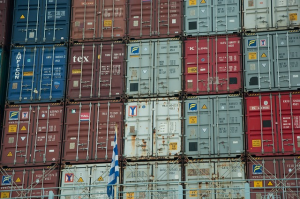 Exports from China were up more than had been expected for November, which in turn pushed the country’s trade surplus to its highest level in over four years, in a sign that global demand is sustaining a recovery in the second largest economy in the world.
Exports from China were up more than had been expected for November, which in turn pushed the country’s trade surplus to its highest level in over four years, in a sign that global demand is sustaining a recovery in the second largest economy in the world.
Shipments outbound were up 12.7% from the same month last year, said the General Administration of Customs in Beijing on Sunday. That rate exceeded economists’ estimates. The country’s trade surplus reached $33.8 billion and was the largest since January of 2009. Imports were also up 5.3% compared to a projection by economists of 7%.
The figures on exports reflected the increase in shipments to South Korea, Europe and the United States, according to the data from customs.
Signs show global activity and the trade cycle gaining new momentum driven by high-income countries recovering, said a chief economist in Hong Kong.
Imports indicated a solid expansion of domestic demand in the country with prices falling from a year earlier.
Shipments overseas increased by 5.8% from the previous month, compared to a decline of 3.8% the previous, showed the customs data.
Exports arriving to the U.S. were up 17.7% during November from the same month in 2012. That is the fastest rate of increase since May of 2012. Shipments arriving in the European Union jumped 18.4%, which was the most in over two years.
The foreign exchange regulator in China said on Saturday it would raise its scrutiny of all trade financing. Banks also should prevent any companies from receiving financing based upon trade that is fabricated.
These measures have a goal of preventing the abnormal flows of foreign exchange.
This latest statement follows the crackdown that started last May following trade data that had been inflated for a number of months on false invoicing used to disguise inflows of capital.
Similar forms of practices could be taking place again, which adds pressure on China’s currency and complicates the liquidity management efforts of the central bank.
